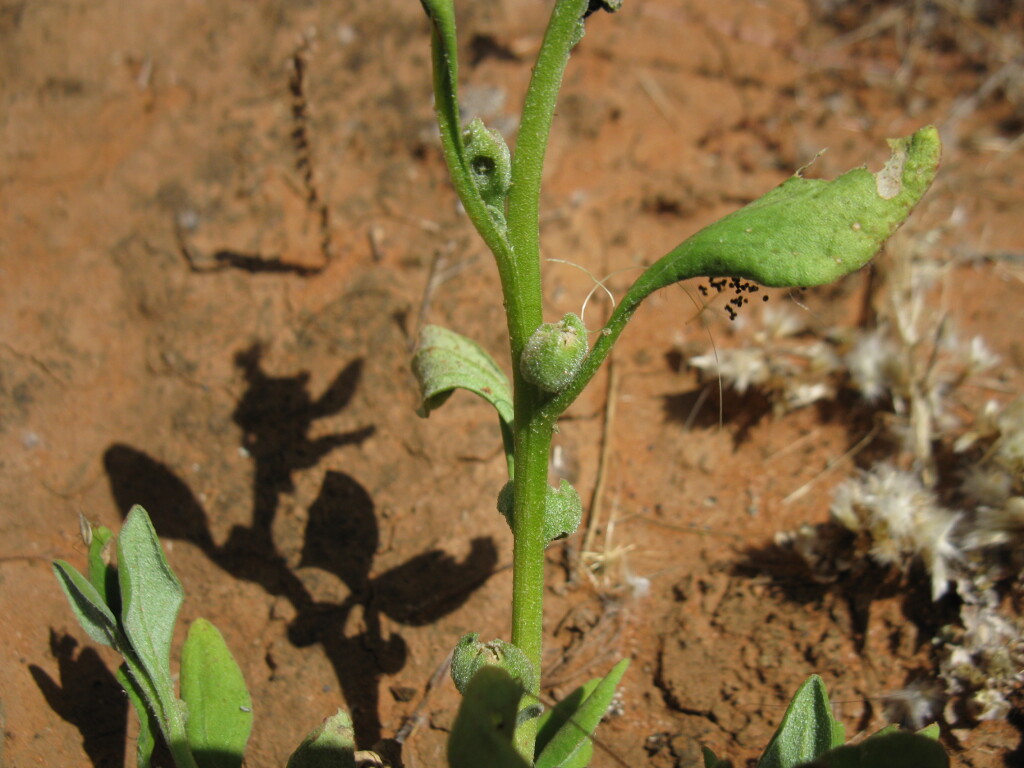Tetragonia moorei
M.GrayProstrate or decumbent annual with branches to c. 50 cm long. Leaves usually narrowly to broadly ovate, elliptic or rhombic, 2–10 cm long, 0.6–5 cm wide, papillose, succulent; petiole 0.6–2 cm long. Flowers solitary, sessile or subsessile; perianth segments 4, unequal, triangular or broadly triangular, 1–2 mm long, green and smooth on inner surface, outer surface densely papillose; stamens 4–8; styles mostly 8–13. Fruit dry or thinly succulent, laterally compressed, broadly ovoid to ellipsoid, 6–14 mm long and wide, variously ribbed, with 2 prominent incurved, claw-like projections and 2–6 smaller projections, or with 4 ± equal projections; seeds mostly 8–13, asymmetrically ovoid, pale brown, c. 2.5 mm long. Flowers mostly Sep.–Nov.
LoM, MuM, VRiv, MSB, RobP, MuF. Occasional in floodplains of the Murray River in the far north-west of Victoria, mainly growing in Red Gum and Black Box woodland on grey clay.
Resembles T. tetragonioides which is largely confined to coastal areas in the east of the state. Tetragonia tetragonioides generally has larger, more angular leaves and and 4–8-seeded fruit that have spreading rather than incurved projections.
 Spinning
Spinning


